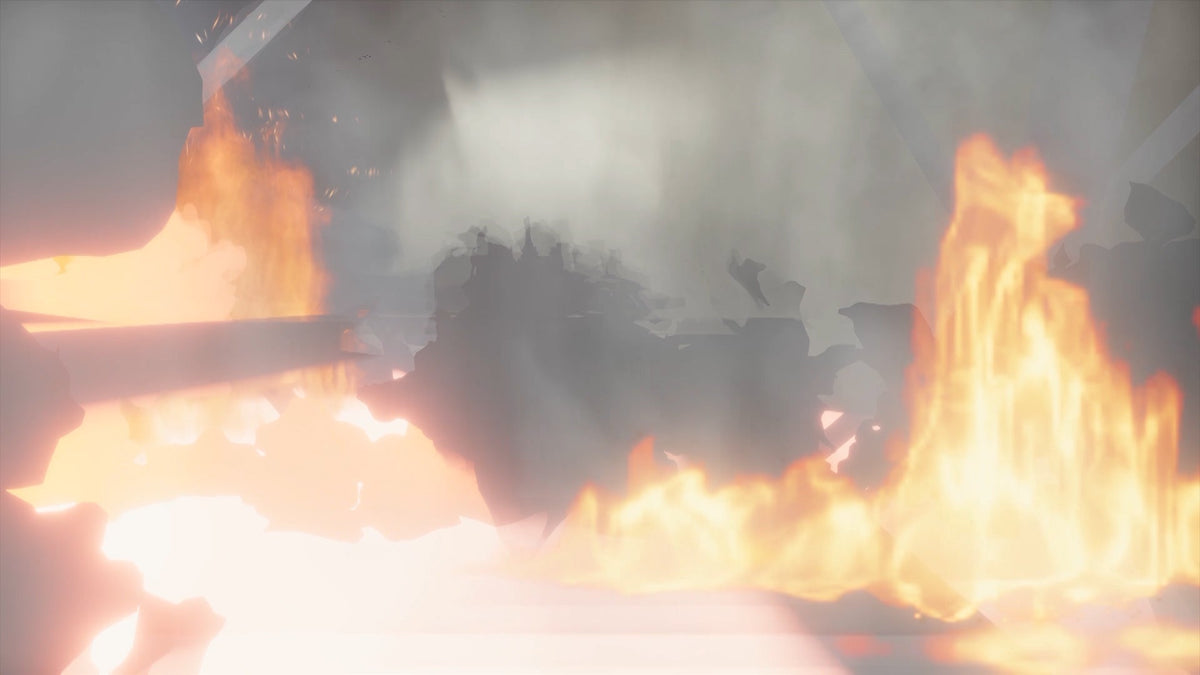
When should you burn it down and when should you rebuild?
|
|
Time to read 3 min
|
|
Time to read 3 min
As anyone can tell you, the end of a relationship can spark a period of creative reassessment. Dylan’s Blood on the Tracks; Björk’s Vespertine; Kahlo’s self-portraits after her divorce. The “breakup” album is a classic of the form.
In 2019, artist Mario Mu assembled the early material to become Architecture with Games in the Title. It’s a violent work – beams of saffron and ochre stream from a building in flames. The themes are intense – Mu used the phrase “architecture of failure” to describe his mindset. The wounds from a split were still raw.
On the other hand, I had a broken heart around the time, a broken heart drama, and I got fired. I was just about to enter the third big burnout of my life. I said, ‘ Oh, so much fire. Let’s do something about it.’ I would fire it and put some fire in the office. It’s as literal as it is. It’s as stupid as it is. Put some fire in the office because my heart is broken. That was the primary impulse.
Emotional separation. Loneliness. Material separation. And on top of it all, Mario had recently moved to a new city in Berlin. All of that instability, however, was the spark for creative release.
Ok, let’s take a big step back – why do periods of intense emotional upheaval spark creativity?
First up, emotional turbulence changes our perspective. We’re now alive and aware of the changes in our environment. We’d settled into our morning rituals, commuting patterns, and creative disciplines. What was no longer is.
While I wouldn’t encourage deliberately tanking a relationship to find inspiration, research from Stanford professor Dr. Teresa Amabile suggests that creativity stems from our motivations. In her book Creativity in Context, Amabile argues for a “componential theory of creativity.” Amabile writes that three things make us creative.
First, you need domain-relevant skills. That’s what you know and your expertise. Those hours of tutorials on Unreal Engine or time flipping through catalogs and retrospectives? All of that creates the basis for your creative practice. The more you know and the longer you’ve spent in a discipline, the deeper your bench will be.
Mu had a painting and 3D animation background before moving to game design and performance. He was working in the games industry before settling on performative play. A critical development was an experimental film class that opened his mind to new creative possibilities, specifically around live-action role-play design. All of the subject matter expertise was colliding to inform his future work.
Are they in love? Is there grief?
Second, motivation is vital. This won’t be surprising, but Amabile says people are most creative when motivated. I know, I know. You have to want to be creative. But if you’re driven by a deep sense of autonomy and a desire to do it yourself, you will be better equipped to weather the storm.
Of course, the breakup was an emotional spark. But Mu says that emotional turmoil incepted an interest in particle systems. Constructing and destroying environments suddenly took on a new resonance. “It’s really interesting; what can be done besides just making another super violent, aggressive, macho, escapist environment,” he says.
And finally, your social environment is key. This could be your physical context, but those Discord servers and Instagram connections all make the proper context to explore new ideas and creative thinking.
Mu’s social network had grown substantially since moving to Berlin. But encounters with fellow creators Omsk Social Club broadened Mu’s horizons. Omsk Social Club’s work in Live Action Role Play helped Mu rethink how LARP could work inside and outside a contemporary art context. “Through this community, I learned a lot,” Mu said. “I had an opportunity to try out different things about what fits well to my practice or what is the closest to what I want to do.”
When all of these work together— domain-relevant skills, motivation, and social environment-you’ve got the right mix for harnessing something new. What’s significant for breakups is that they have the potential to change all of those things.
Suddenly, from a broken heart came real inspiration. Mu started to explore the interactions between two characters in Architecture. Specifically, he pushed himself to move beyond the exercise of theory into the human dynamics that sparked his “fire” in the first place.
Are they in love? Is there grief? I was also opening emotional space. Then things started to fit very nicely together. At that time, I also wanted to depart from theory and from some lecture performative aspects of a lot of work to deal with the contemporary and digital virtual condition. Then incorporating dialogues was a way to find another way to talk about issues that I thought were important.
Fortunately, Mario was not alone, and nor should you be. The network of contemporary art creators and LARP practitioners was a buttress against going adrift. Amabile argues that those positive relationships with your community foster trust, open communication, and mutual support.
Take your time. Take a breath. Then try to build something from the ashes.


